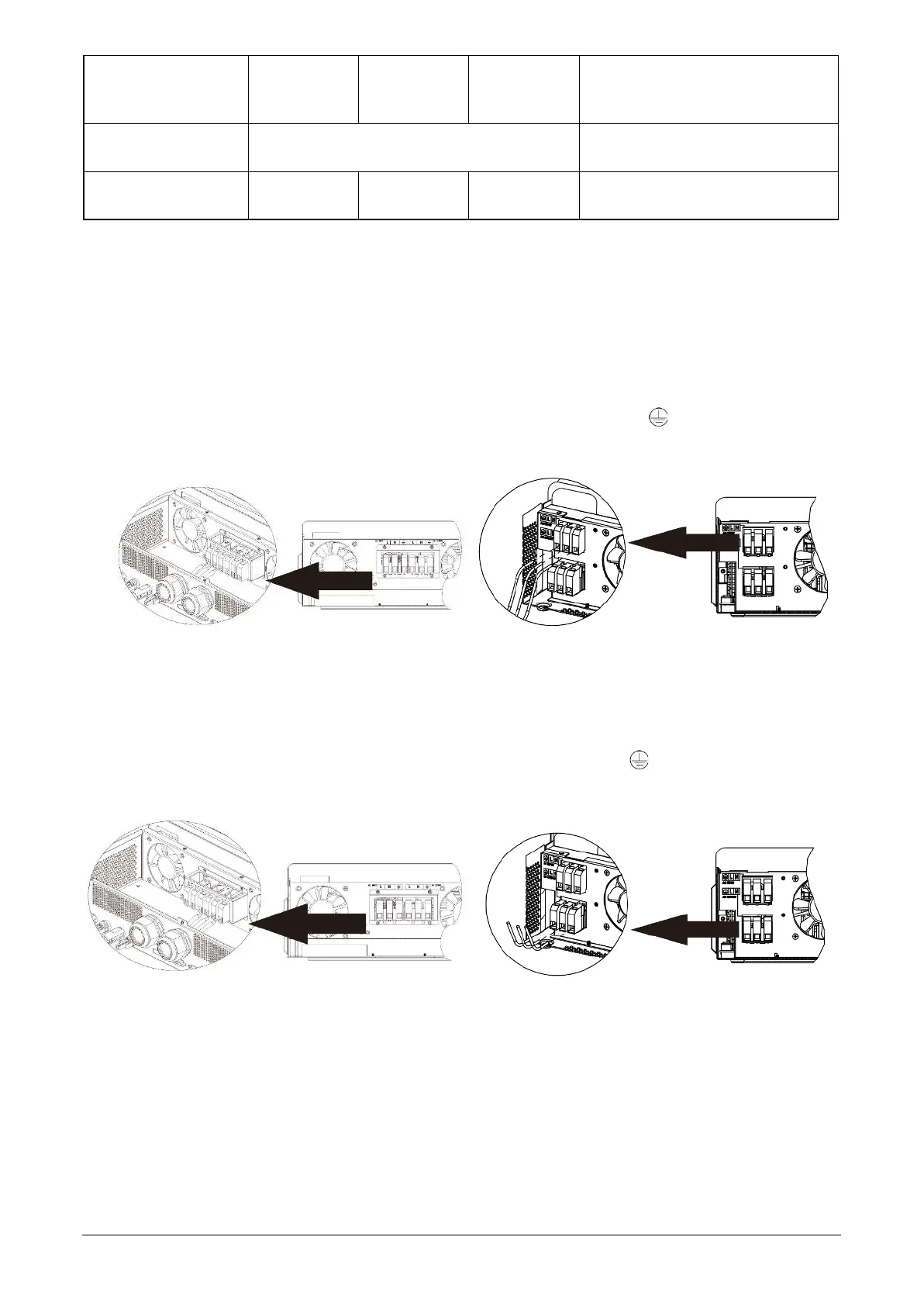www.phocos.com 10 | P a g e
Any-Grid model
PSW-H-5KW-
230/48V
PSW-H-3KW-
230/24V
PSW-H-3KW-
120/24V
PSW-H-5KW-120/48V
PSW-H-6.5KW-120/48V
PSW-H-8KW-230/48V
AC input and output
cable cross-section
4 ~ 10 mm², AWG 7 ~ AWG 11 6 ~ 16 mm², AWG 4 ~ AWG 9
Circuit breaker rating
40 Aac
≥ 280 Vac
30 Aac
≥ 280 Vac
40 Aac
≥ 140 Vac
60 Aac, ≥ 280Vac for PSW-H-8KW-
230/48V, 140Vac for 120Vac models
Steps to conne ct the AC source and AC loads:
1. WARNING: Ensure the battery cable fuse is removed or breaker is secured in the open position.
WARNING: Ensure the AC source breaker is secured in the open position and there is no voltage on the
conductors before continuing.
2. Remove 10 mm / 0 .4 in of insulation for the six AC conductors (neutral“N”, live “L”and protective earth“PE”
for the AC source and loads).
3. Insert t he thre e AC source wires through the rectangular casing hole (cable gland for 120 Vac models and
PSW-H-8KW-230/48V) marked“ACINPUT”. Insert the “PE”protective conductor first into the
corresponding AC input terminal and tighten with a torque of 1.4 ~ 1.6 Nm (1.0~ 1.2 lbf⋅ft). Repeatfor the
neutral“N”and live “L” conductors.
PSW-H-5KW-120/48V, PSW-H-6.5KW-120/48V All other models
and PSW-H-8KW-230/48V
Fig. 7: AC input connection
4. Insert t he thre e AC load wires through the rectangularcasing hole (cable gland for120 Vac models and PSW-
H-8KW-230/48V) mar ked “ACOUTPUT”. Insert the“PE”protective conductor first into the corresponding
AC output terminal and tighten with a torque of 1. 4 ~ 1 .6 Nm (1.0 ~ 1.2 lbf⋅ft). Repeatfor the neutral“N”and
live “L”conductors.
PSW-H-5KW-120/48V, PSW-H-6.5KW-120/48V All other models
and PSW-H-8KW-230/48V
Fig. 8: AC Output connection
5. Make sure the six wires are securely connected.
CAUTION: Over-tightening the terminal screws can cause damage to the terminal, under-tightening
can cause a loose connection and excessive heat during operation, make sure to use the prescribed
torque. Ensure none of the conductor insulation is jammed between the terminal contacts.
CAUTION: Ensure the polarity is correct on all wires. Failure to do so may cause a short-circuit at the
AC source when several units are working in parallel operation.

